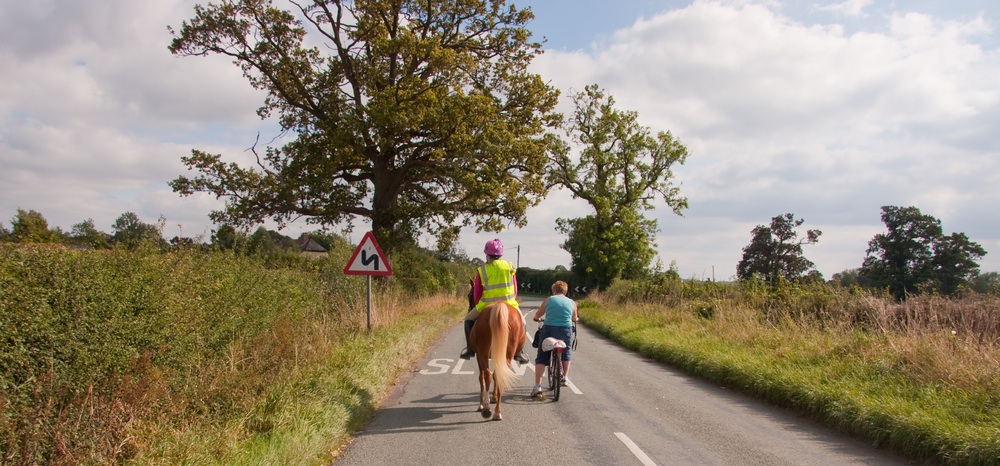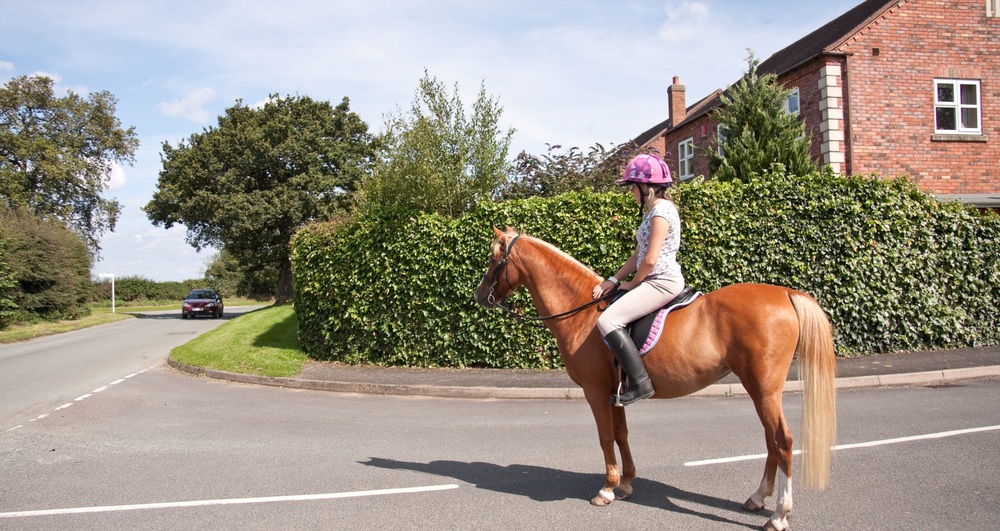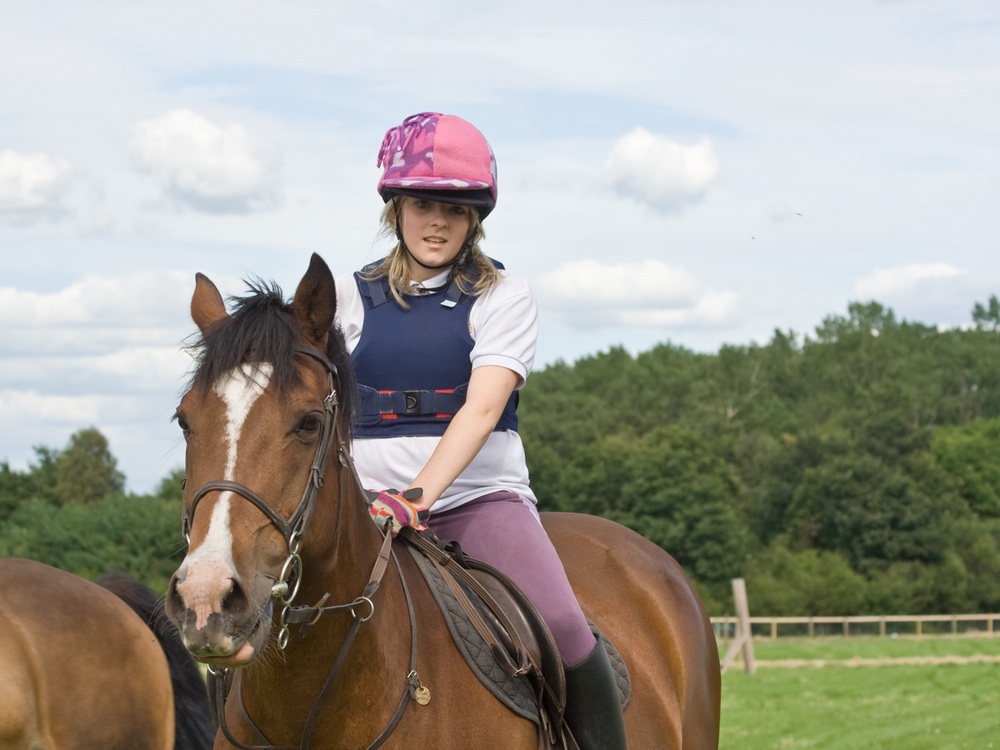Riding safety
Riding can be a very relaxing pursuit, but on occasions, it may prove to be dangerous. People die every year as the result of accidents involving horses, and not only when jumping, although obviously, this is likely to be more hazardous than an ordinary hack.The temperament of the horse can be significant when it comes to avoiding accidents, particularly on the roads. Not all drivers are as responsive to the needs of horses as they could be, and driving too close, or simply not slowing down when passing a horse and rider can be a recipe for disaster for all concerned.
Should your horse be nervous or unused to traffic, try to avoid having to ride along a road, but plan your route as far as possible to encompass recognised bridleways or similar riding routes. Even here though, you need to stay alert as there can be unexpected hazards, such as the sudden appearance of dogs which may cause a horse to panic.
Out on the road
When it comes to riding safely on a road, it is often recommended to keep in single file rather than riding two abreast, unless one of the horses is especially nervous and needs to be escorted by a steadier individual. If you are part of a group, avoid lagging behind or wandering across the road, as you may suddenly encounter an on-coming vehicle and not have time to get out of the way.

On a narrow lane, pull over at a convenient point to allow a car to overtake, if there was not previously space for it to pass by you on the road. Should you need to cross the road, do not forget to indicate your intentions to a car behind well in advance, by holding out your right hand. This will give the driver adequate time to brake if necessary, should you have to wait before crossing the road. Thanking drivers for their patience is also appreciated.
Especially when visibility is poor, on foggy days or at dusk, take advantage of the fluorescent garments which are now available to alert motorists to the presence of a horse and rider on the road. These include arm bands and a backcloth, worn over a riding jacket, while a loop to fit round the horse's tail will give extra protection, as can stirrup lights.
Learning to ride properly is obviously not only likely to be more pleasurable, but it will also make you more aware of safety concerns. In this respect, having proper equipment can prove to be vital, and although you may be able to purchase items second-hand, this is not always necessarily a good idea. A riding hat is an essential piece of equipment, but it can be impossible to tell if this has been damaged previously. After a fall for example, it is usually recommended to replace the hat for this reason.
Riding hats
There have also been on-going advances in the safety design of riding hats, which means that buying an old hat is not to be recommended. Avoid being unduly influenced by style: safety is a far more significant feature, so only consider riding hats which carry recommended safety endorsements, such as the British Standard kite mark.
The fit is equally vital, partly because a loose fitting hat could contribute to an accident, if it slides down over your face. Even worse, it could shift position leaving part of your skull exposed during a fall. Studies have revealed that most riders are injured on the sides of their heads, so that a hat which slips is clearly dangerous, as it may not provide any real protection when needed.rider and car

Buying from an experienced vendor should provide reassurance that you have the correct size. A riding hat which fits properly will feel firm around the head. It should not have an excessive amount of foam lining to hold it in position, because this can become compressed in the event of a fall, with serious consequences as it affords no real protection.
If there is a gap at the back of the hat however, this need not be a cause for concern, provided that the hat fits properly over the head itself. In the case of a child, never obtain a larger size with the aim of allowing your child to grow into it, as this significantly increases the risk of injury in the event of a fall.
Back protectors

It is not just the head which is vulnerable in the case of a fall however, and another significant piece of safety equipment for riders is likely to be a back protector. This will help to provide cushioning for the vertebral column, and internal organs such as the kidneys.
A back protector is simply slipped over the head, and taped in place around the sides of the body, being worn under the outer garments. Again, various sizes are available, and it is important to choose one which fits well. If you are not used to wearing one, it may feel uncomfortable at first, but this stage soon passes, and the protection which it provides can be vital in the event of a fall.
Other equipment can also serve to prevent injury, such as bent leg iron or peacock stirrups. These will enable you to free your foot quickly, rather than possibly being left trapped by the stirrup in the event of a fall, with the horse then being out of control. Thankfully, although most riders fall off at some stage, they rarely sustain serious injuries. But it is worthwhile taking advantage of the latest safety equipment in a sport where a dozen riders are killed on average in the UK alone every year, and many more need hospital treatment for injuries.
Further information
*The British Horse Society produce a safety manual called Riding and Roadcraft, published by Kenilworth Press (ISBN 978-1872119632) priced at £5.95, which is regularly updated and essential reading for all who ride on a road.
It is also possible to take a Riding and Road Safety Certificate, again under the auspices of the BHS, whose headquarters are at the British Equestrian Centre, Stonleigh Park, Kenilworth, Warwickshire CV8 2LR.